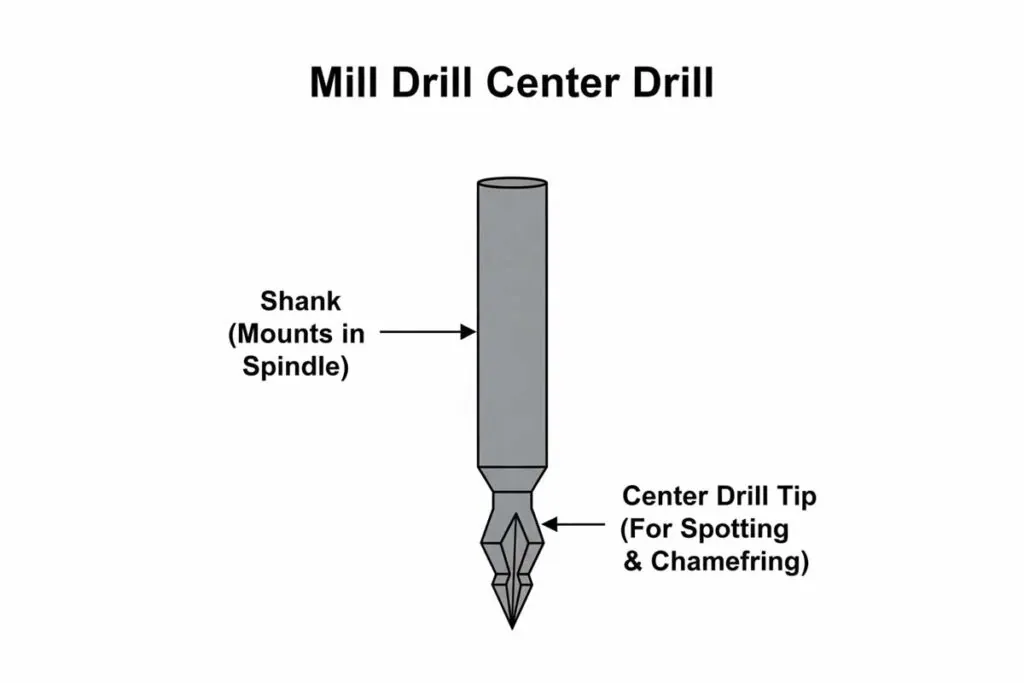Definition of Center Drill
A center drill in a mill drill machine is a short, stiff tool with a pilot tip and a wider countersinking section, used to create a precise starting point for a subsequent drilling operation. It prevents the main drill from wandering or deflecting, especially on hard or uneven surfaces. Center drills typically have a 60° tip angle and are classified by standardized sizes. In addition to guiding drills, they are also used to produce conical centers in shafts for turning between centers. For mill drill use, center drilling is a preparatory step that improves hole position accuracy, reduces tool wear, and enhances surface finish in deeper drilling.
Why It Matters for Band Saw and Mill Drill Machines
Accurate hole placement is critical in mill drill machining. Without a center drill, larger twist drills can deflect when starting on flat or angled surfaces, leading to positional errors and potentially damaging the workpiece or tool. A center drill eliminates this risk by creating a true, centered hole that guides subsequent drills precisely.
Using a center drill also reduces lateral load on the primary drill bit, extending its service life and improving machining efficiency. This is particularly beneficial in hardened materials or when precision hole location is crucial, such as in jig drilling or when producing mating parts with tight tolerances.
Related Terms
Spot DrillTwist Drill
Pilot Hole
Drilling Accuracy
Tool Deflection
Chamfering Tool
FAQ
When should a Mill Drill Machine Center Drill be used before drilling?
A Mill Drill Machine Center Drill should be used whenever accurate hole placement is required, particularly in hard materials or on angled surfaces. It ensures that the twist drill starts precisely, minimizing deflection and positional errors in the final hole.
What are the differences between a Mill Drill Machine Center Drill and a spot drill?
While both create starting points for drilling, a Mill Drill Machine Center Drill has a pilot tip and is stiffer, making it suitable for creating lathe centers as well. A spot drill lacks the pilot and is designed purely for creating shallow guide holes with better surface finishes.
How deep should a Mill Drill Machine Center Drill hole be?
The depth depends on the size of the follow-up drill, but typically, only the conical section of the Mill Drill Machine Center Drill is used. Overdrilling can damage the tip or cause chatter. A depth of 1.5 to 2 times the pilot diameter is often sufficient.
Can a Mill Drill Machine Center Drill be used for countersinking?
Only to a limited extent. While the wider section resembles a countersink, Mill Drill Machine Center Drills are not designed for finish-quality countersinking. For consistent results, a dedicated countersink tool should be used instead.



